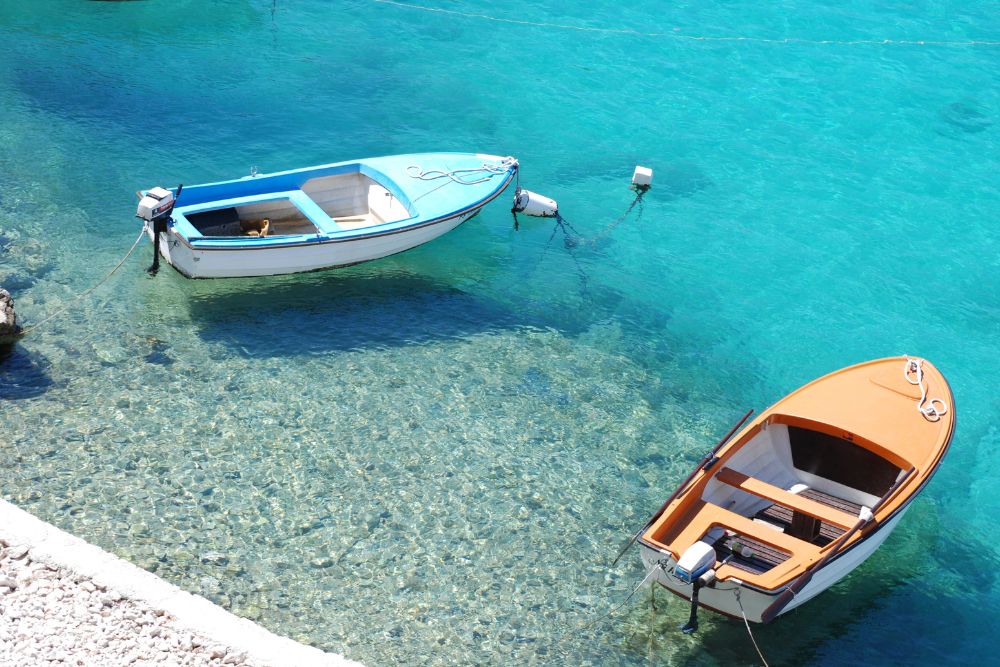When the weather is warm, and the sun is shining, there’s nothing quite like spending a day out on the water. However, if you’re planning to take your boat out for a spin, you’ll need to know how to beach it properly. Beaching a boat may seem like a simple task, but if it’s not done correctly, it can lead to serious damage to your vessel.
How To Beach A Boat
Beaching a boat can be a great way to enjoy the water without having to worry about docking fees or other mooring costs. However, it’s important to do it safely in order to avoid damaging your boat or injuring yourself or others.
You need to keep a few things in mind when you’re beaching your boat.
Check the water for swimmers. There shouldn’t be anyone in the water who could get hurt in the process of beaching your boat.
Make sure the beach is deep enough. You don’t want to beach your boat in shallow water, which could damage the motor. The depth of the water should also be consistent so that you don’t suddenly find yourself in too shallow of an area.
Look for any sharp objects. Rocks, branches, and other objects in the water can damage your boat if you aren’t careful. Finding another spot to beach your boat is best if you can’t see the bottom clearly because the water is dark or murky.
Step 1: Approach The Beach
When you are approaching the beach, it is important to take things slow and steady. You will want to keep an eye out for any potential hazards such as rocks or shallows that could damage your boat. Once you find a suitable spot, you can begin to lower your speed.
Step 2: Switch Off The Boat When The Water Is Waist Deep
As you are approaching the shore, you will want to switch off your boat’s engine when the water is waist deep. This will help prevent any further damage to your vessel. You may also want to consider putting your boat into reverse at this point so that you can more easily control it as you make your way onto the shore.
Step 3: Secure The Boat With An Anchor
Once you have turned off your engine and are in a safe position, it is time to secure your boat with an anchor. This will help ensure that your boat does not float away or get pulled out by the tide while you are ashore.
Step 4: Allow The Passengers To Disembark
After anchoring and securing your boat, you can allow your passengers to disembark. It is important to ensure that everyone disembarking is aware of their surroundings so that they do not accidentally damage the boat or injure themselves.
Step 5: Secure The Boat In Place
Once everyone has safely disembarked from the vessel, it is time to secure the boat in place. This can be done by tying it up to a nearby tree or post. Be sure to use sturdy rope that is capable of holding your boat in place in case of strong winds or waves.
Step 6: Check On The Condition Of The Boat
Before leaving your boat unattended, it is important to check its condition and ensure everything is secure. This includes checking the anchor line for potential issues and ensuring that all tie-downs are secure. Once you have done this, you can be confident that your vessel will be safe while you are away from it.
Step 7: Departing From The Beach
Now that everything has been taken care of and your vessel is safely secured, you can enjoy some time on shore without worrying about your boat floating away or being damaged by the waves. When you are ready to leave, simply untie the rope from whatever it was securing your vessel to and make your way back out into open water.
How To Anchor A Boat Offshore
Now let’s move on to anchoring a boat offshore.
When anchoring a boat offshore, the goal is to find a spot where the water is deep enough that your boat won’t touch the bottom but not so deep that it becomes impractical to anchor. You also want to ensure no obstacles in the area could catch your anchor line and cause your boat to become entangled.
Once you have found a suitable spot, follow these steps:
Step 1: Put The Anchors In Place
Boating is a great way to relax and enjoy the outdoors, but it’s important to be aware of the safety precautions that need to be taken. One of the most important safety measures is anchoring your boat offshore. This will ensure that your boat doesn’t drift away or become pulled under by currents. Fortunately, it’s easy to anchor a boat offshore if you follow these simple steps.
Step 1: Put The Anchors In Place
The first step is to put the anchors in place. You’ll want to place them at least three feet away from the boat so they can get a good grip on the bottom. Make sure they’re facing opposite directions to keep the boat steady in strong winds.
Step 2: Lower The Stern Anchor
Once the anchors are in place, you’ll need to lower the stern anchor. This anchor will be responsible for keeping the boat’s back end in place. Lower it slowly, so it has time to sink into the sand and get a good grip. You may need to add more weight to the anchor if it’s not sinking deeply enough.
Step 3: Cut The Engine
After the stern anchor is in place, you can cut the engine. This will help conserve fuel and prevent any fumes from drifting back towards the beach. Let the boat drift until it’s over the anchors and then stop completely.
Step 4: Allow The Passengers To Disembark
Once the boat is anchored, you can allow the passengers to disembark. They should be careful not to damage the anchor lines as they leave the boat. It’s also important that they stay close to shore, so they don’t get pulled under by currents. If possible, have someone stay onshore to keep an eye on them.
Step 5: Rotating The Boat
Rotating the boat will help ensure that all sides are equally protected from wind and wave damage. You can do this by either pulling up one anchor and moving it to a different spot or by using both anchors to slowly turn the boat in a circle. Be careful not to rotate too quickly, or you could upset passengers who are still on board.
Step 6: Disembark From the Boat
After rotating the boat, you can disembark from it yourself. Be sure to take all of your belongings with you, so they don’t get lost in the water. You should also disconnect any electronics, so they don’t get damaged by salt water. Once everyone is safely on shore, you can relax and enjoy your time at anchor!
Step 7: Departing From The Beach
When you’re ready to leave, simply reverse these steps and carefully make your way back to shore. Be sure to watch for other boats and swimmers as you depart, so you don’t cause any accidents. Thanks for following our guide on how to anchor a boat offshore! We hope you found it helpful and informative.
In Conclusion
Beach boating can be a great way to spend a day on the water, but it is important to take the necessary precautions in order NOT TO DAMAGE YOUR BOAT! We hope that this step-by-step guide was helpful and that you now feel confident about how to beach a boat properly. If not, we recommend seeking professional help in order to void any costly mistakes. So, next time you are out on the water, don’t forget to put these techniques into practice!



